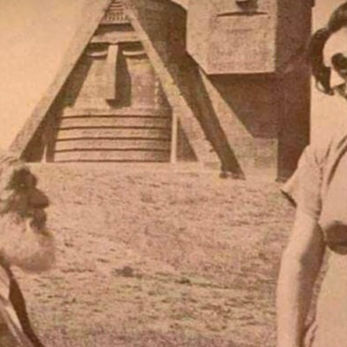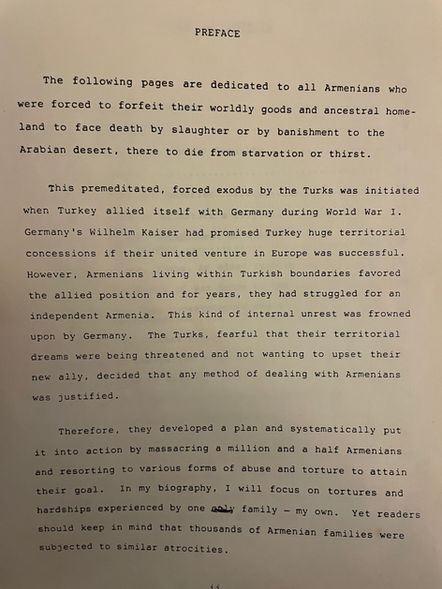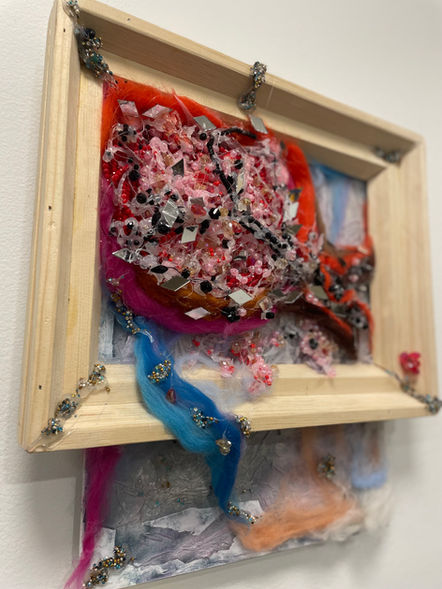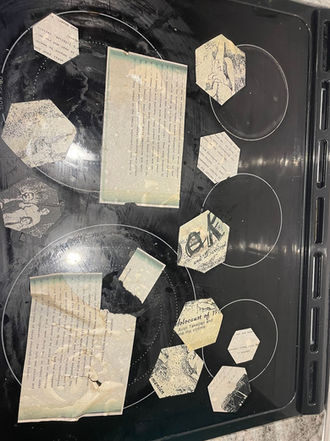
About "To Artsakh"
The Story of a Humanitarian Crisis Told Through Art.

Pashinyan’s Surrender of Artsakh to Azerbaijan, Harut Sassounian, Horison Weekly, copyrighted

The Story
Armenians around the world are mourning the recent loss of their sacred land, Artsakh (also known as Nagorno-Karabakh). This loss is nostalgic due to their genocidal history that has repeated itself over the course of a century, beginning in 1915 with the loss of two-thirds of their land and people. Ever since, they have been fighting for their lives to hold onto the land they have left.
Artsakh proves to have been native to Armenia dating back to the 1st century, holding an ethnic Armenian population of over 95%. For the first time ever, there are only about 50 Armenians left in Artsakh today due to ethnic cleansing.
"For those who question why Artsakh is so important to Armenia, there are many answers that, individually and combined, support the case for the inseparability of the two republics—connected by time, territory, culture, and history. These are the ties that bind the two as one people, one nation and one truth—the right to exist free and at peace on their ancestral lands."
___
The Armenian-Artsakh Connection
The building blocks of an unbreakable bond
Researched and compiled by AGBU Armenia
Yellow represents Greater Armenia pre-genocide (or Historical Armenia). Orange represents present-day Armenia. The yellow portion farthest right is the Republic of Artsakh (Armenian name), also known as Nogorno Karabakh.

1921: The Caucasian Bureau of the Russian Communist Party Central Committee decided during a plenary session that Artsakh would be integrated to Armenia. A day later, without any deliberation or vote, Stalin decided that Artsakh would be included in Soviet Azerbaijan.
1987: Artsakh Armenian population began a campaign to separate from Azerbaijan and unify with Armenia.
1991: With the break-up of the Soviet Union, Artsakh declares itself an independent republic. As Soviet control loosens, frictions escalate into a full-scale war.
1992-94: First Artsakh war. More than 25,000 people lost their lives, and more than a million forcibly displaced from their homes, creating hundreds of thousands of refugees.
1994-2020: A simmering stalemate prevails punctuated by armed clashes.
2020: Second Artsakh war. Azerbaijan launches offensive recapturiny territory around Artsakh.
Russian peacekeepers are deployed to monitor a new Moscow-brokered ceasefire, and ensure safe passage through the Lachin corridor that separates Artsakh from Armenia.
More than seven thousand soldiers and civilians were killed, with hundreds more soldiers wounded.
2022: Fighting breaks out between Armenian and Azerbaijani troops
2023: Azerbaijan further tightened access to Artsakh, banning Red Cross convoys from passing through the Lachin Corridor (only passageway connecting Artsakh and Armenia). Azerbaijani security forces also detained an individual passing through a checkpoint for medical care in Armenia, leading to a suspension of medical evacuations for critically-ill patients. With no food and medical supplies allowed to pass through the corridor, shelves sat empty as the humanitarian crisis turned critical.
Following a months-long Azerbaijani blockade of the Lachin corridor, Azerbaijani forces rapidly overwhelm defending troops and seize the region after 24 hours of fighting.
Around 120,000 Armenians flee, fearing persecution if they stayed
2024: Nagorno-Karabakh is formally dissolved.
Sources:
BBC News, Nogorno Karabakh Profile
Conciliation Resources, The Armenian-Azerbaijani Conflict in Focus
Global Conflict Tracker, Nogorno Karabakh Conflict by The Center for Preventative Action
AGBU.org, The Armenian-Artsakh Connection Researched and Compiled by AGBU Armenia
The Artist and His Mother, Arshile Gorky, Whitney.org, copyrighted 2023 Whitney Museum of American Art

The Art












Click to Read About Each Painting

Great Uncle's Memoir
Visual Database of Armenian Populations Through Time
Each bead represents 1,000 people, and each color represents a different group of people affected by ethnic cleansing. For example, 1,500 black beads represent the 1.5 million genocide deaths, the 150 turquoise beads represent the 150,000 displaced people after this year’s ethnic cleansing in Artsakh. I also did this with buttons, such as 8 buttons throughout the piece representing the 8,000 dead from Artsakh wars stretching over a 30 year period of time. I made a “key” or “map” of these figures on the handwritten paper pictured above.
There was no actual paint used in this painting. Instead, I used liquid from mulberry leaves and pomegranate juice. The felting wool is to pay tribute to the importance of rug weaving in Armenian culture. The contrast of soft and sharp textures is a comparable representation of Armenian history- full of massacre and hardship yet so much perseverance and growth. I learned a lot in the process through my research and was actually surprised to see the population of Armenia is actually not much different than pre-genocide, but what is drastically different is the size of land. That is why I chose to represent the pomegranates as land size, beads or “seeds' as people, and the smaller scattered pomegranates as the Diaspora. It was impressive and reassuring to see how much our population has grown despite the loss of land and atrocities.
Becoming Me, A Version of Them
Becoming Me, A Product of Them is a piece based on my personal relationship with my culture and ancestors. In addition to researching Armenia’s humanitarian crisis, history, population, land and traditions, I believe it’s also important to tell my own personal experience growing up in this culture with genocide survivors. It is a specific way to grow up that I did not realize until adulthood with all of my grandparents passed on. With this absence comes a presence of heavy responsibility and nostalgia every day my life is lived.
I feel like I am alive by the slight miracle and chance that my great grandparents survived the genocide and found each other years later to continue our bloodline. But then I remind myself that it is not by chance; it is because of their perseverance and diligence to survive. Often us Armenians can talk about our past and current situations with a victim mentality, like ‘look what has happened to us.’ However, I’d like to reframe that for my sake as well. I would like to look through a different lens to see this story- to see my story- and this lens is a positive one. It’s a celebration of how we’ve grown, and what we’ve become.
This project started with a very different meaning. I was creating the Armenian alphabet in a whimsical, colorful and playful way. I was also trying to go based off of my memory in Armenian school as a child as much as possible. Most of the letters used were the ones ingrained in my brain on an early Sunday morning with 2 other children in the class being taught by the elderly man Hagop, preparing so much just for a couple children to learn our mother tongue. He was so proud, and it didn’t matter how few people he was teaching. It was the fact that he was passing on the language to Armenian children. This is an example of how sacred the youth are in our culture.
I feel that mixing this playful and child-like aspect with our serious history is not only helpful but necessary for the next generations of Armenians to heal and share in a way that is hopeful. We not only survived- we thrived.
There are aspects of Armenian culture that are traditionally rigid, which is something I like to play off of and contradict in my work. I enjoy using whimsicality in conversation with tradition, proving that traditions will live on no matter what. Yes I am 3rd generation, born in the U.S., very Americanized and don’t speak fluently, but I carry on our legacy as a product of a ‘Western Armenian’ which is now Turkey. I am a product of ‘Old Armenia’ and have joined the millions of other 3rd generation Armenian Americans who have been in the process of creating ‘New Armenia.’
Dedicated to Hagop Boyajian, 1938-2023
Process





















































































